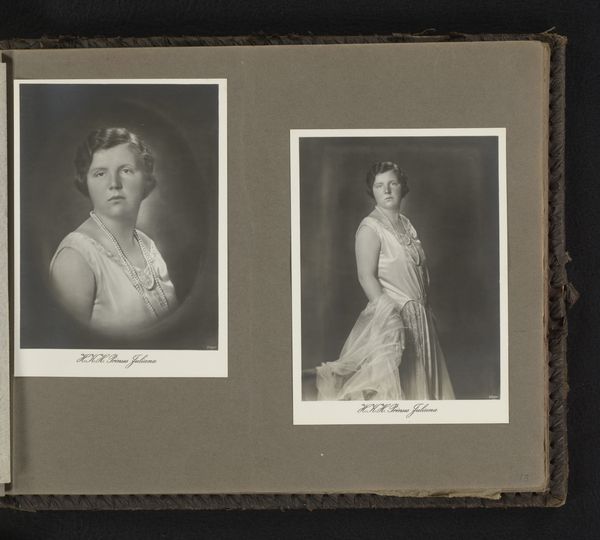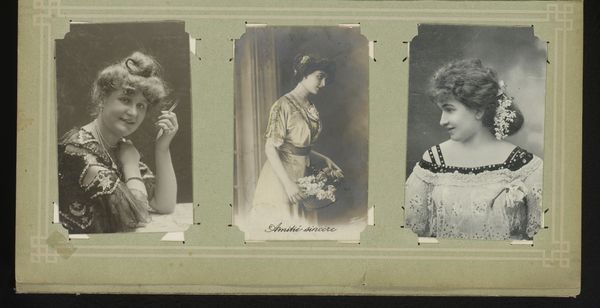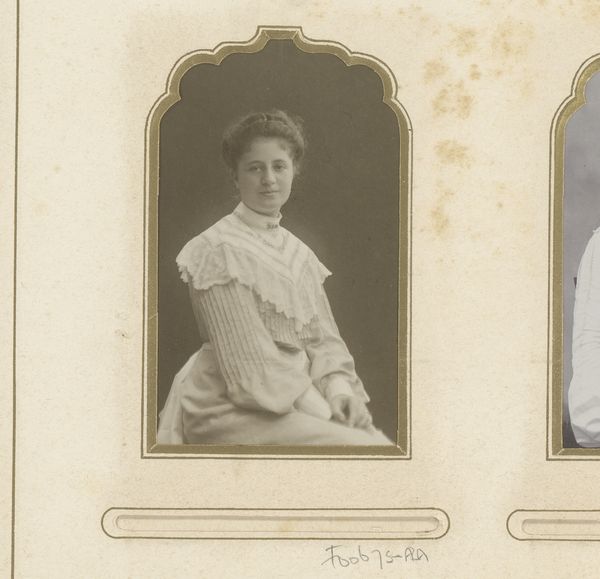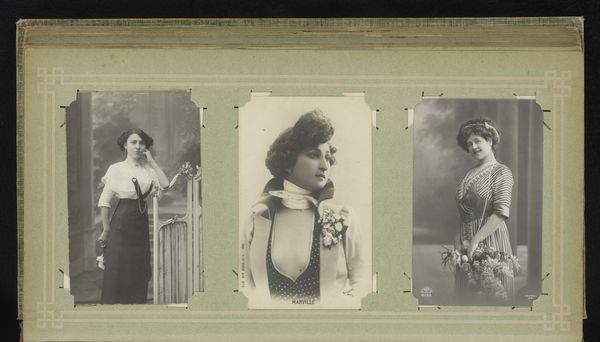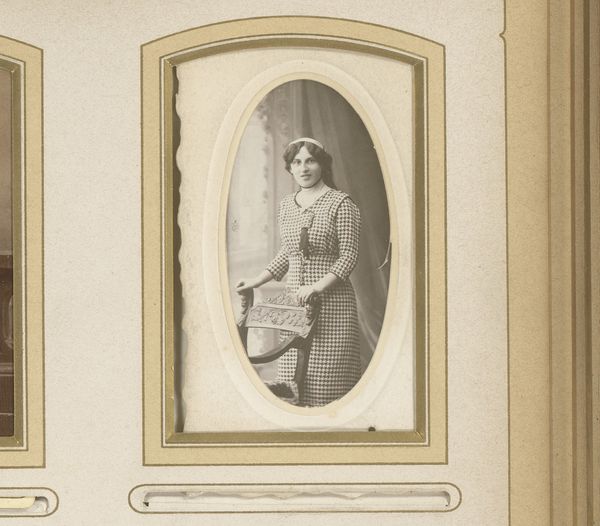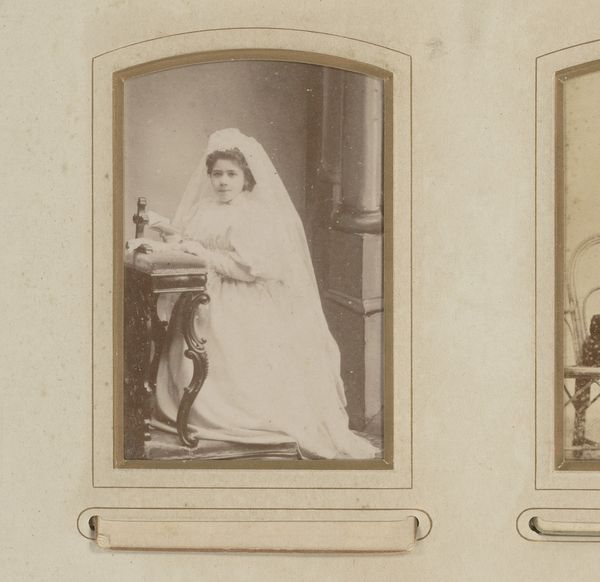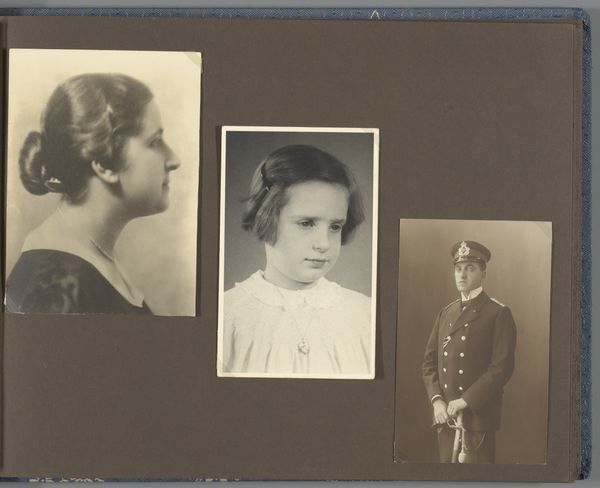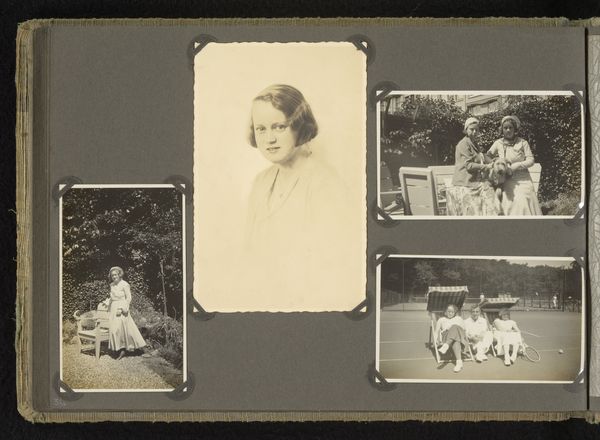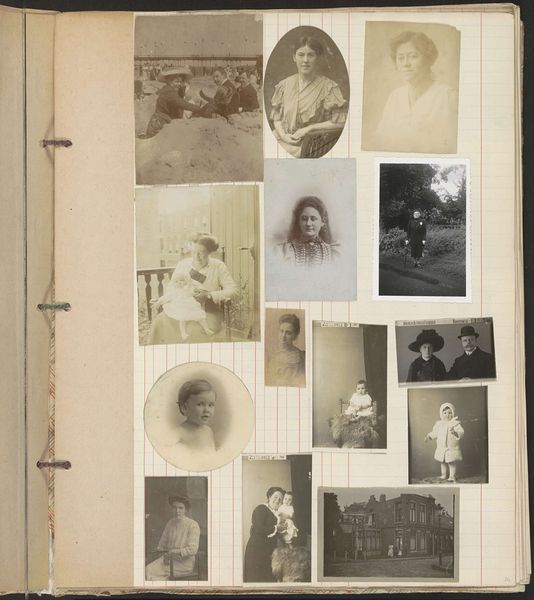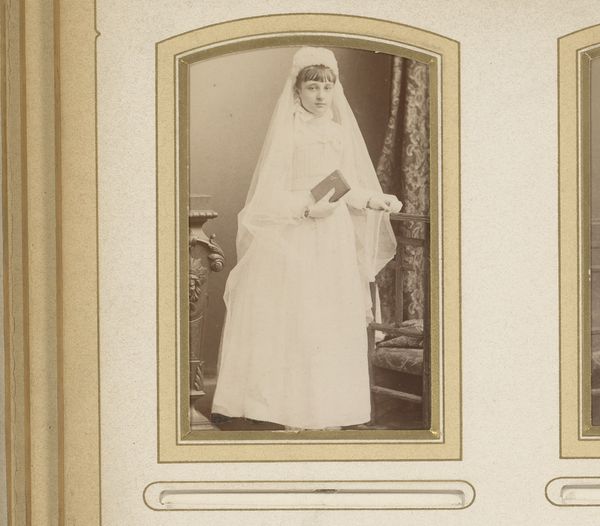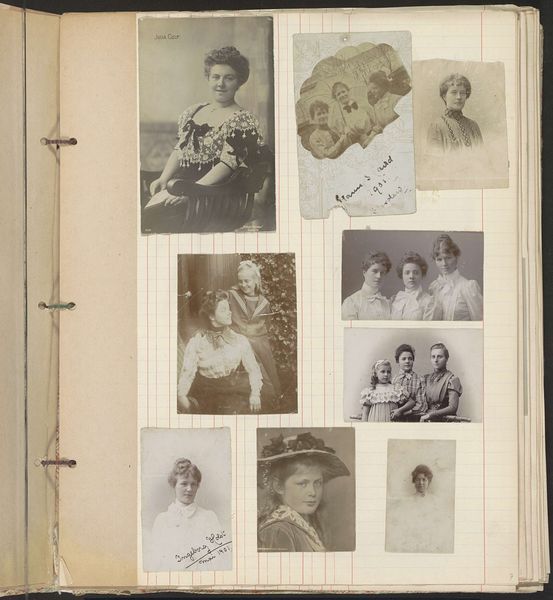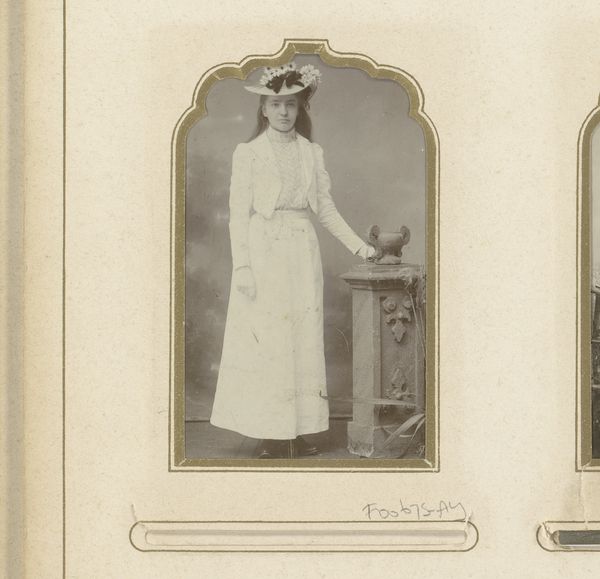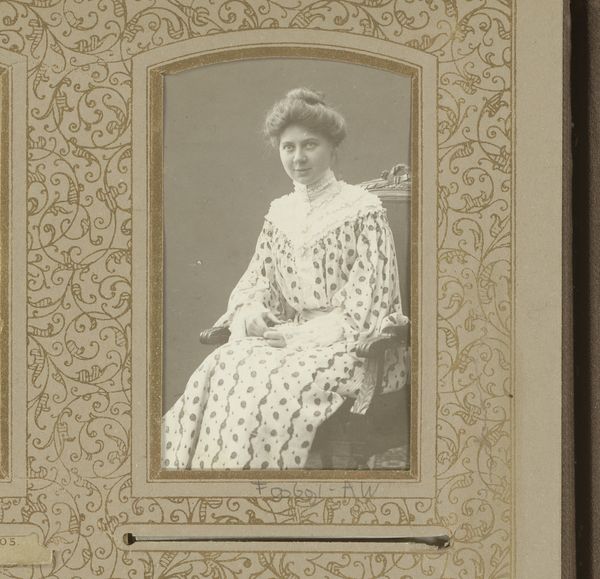
Twee portretten, van prinses Juliana en koningin Wilhelmina 1934 - 1936
0:00
0:00
photography
#
portrait
#
photography
#
modernism
Dimensions: height 220 mm, width 262 mm
Copyright: Rijks Museum: Open Domain
Editor: This is "Twee portretten, van prinses Juliana en koningin Wilhelmina," two photographic portraits by Franz Ziegler, dating from 1934 to 1936. I'm immediately struck by how simply they’re presented within this album; it's a pretty standard book. What can you tell me about the construction and presentation of this piece? Curator: Notice how the means of photographic reproduction are themselves being showcased within an album—essentially mass-produced images being archived. This challenges the unique aura typically assigned to portraiture, especially of royalty. Consider the labor involved: from Ziegler's studio, processing chemicals, to the factory where these albums were manufactured. What does it tell us about consumption and access during that period? Editor: So you are focusing more on how it was made rather than how the women look? That's interesting. What was the culture like then? Curator: Absolutely. By looking at the production and distribution of these photographs, we gain insights into the social and political context. The modernist movement encouraged mass-produced art, not handcrafted pieces. Now what kind of consumers had access to this? Editor: Hmmm. The photos feel accessible and even egalitarian compared to oil paintings or sculpture, so maybe many people had these displayed? It makes me consider the act of documentation, that photography served to legitimize the Royal Family. Curator: Exactly. So how would you describe the function of these objects? They are not only documenting, but also reinforcing power structures, through wider visibility. These portraits acted almost like propaganda by using affordable technology. Editor: Wow! I would have only thought about the aesthetic features, like composition. Looking at the labor and the intended consumers gives it new significance for me. Thanks for pointing out aspects of the art creation beyond the picture! Curator: Precisely. Recognizing the interconnectedness of material production, social conditions, and artistic expression provides richer understanding.
Comments
No comments
Be the first to comment and join the conversation on the ultimate creative platform.
